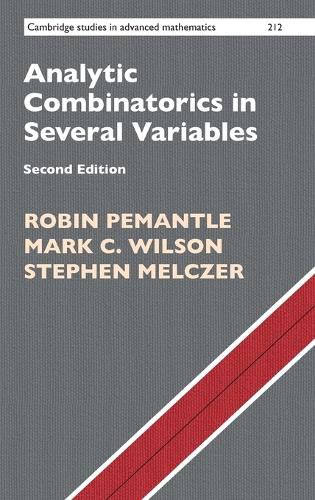Readings Newsletter
Become a Readings Member to make your shopping experience even easier.
Sign in or sign up for free!
You’re not far away from qualifying for FREE standard shipping within Australia
You’ve qualified for FREE standard shipping within Australia
The cart is loading…






Discrete structures model a vast array of objects ranging from DNA sequences to internet networks. The theory of generating functions provides an algebraic framework for discrete structures to be enumerated using mathematical tools. This book is the result of 25 years of work developing analytic machinery to recover asymptotics of multivariate sequences from their generating functions, using multivariate methods that rely on a combination of analytic, algebraic, and topological tools. The resulting theory of analytic combinatorics in several variables is put to use in diverse applications from mathematics, combinatorics, computer science, and the natural sciences. This new edition is even more accessible to graduate students, with many more exercises, computational examples with Sage worksheets to illustrate the main results, updated background material, additional illustrations, and a new chapter providing a conceptual overview.
$9.00 standard shipping within Australia
FREE standard shipping within Australia for orders over $100.00
Express & International shipping calculated at checkout
Discrete structures model a vast array of objects ranging from DNA sequences to internet networks. The theory of generating functions provides an algebraic framework for discrete structures to be enumerated using mathematical tools. This book is the result of 25 years of work developing analytic machinery to recover asymptotics of multivariate sequences from their generating functions, using multivariate methods that rely on a combination of analytic, algebraic, and topological tools. The resulting theory of analytic combinatorics in several variables is put to use in diverse applications from mathematics, combinatorics, computer science, and the natural sciences. This new edition is even more accessible to graduate students, with many more exercises, computational examples with Sage worksheets to illustrate the main results, updated background material, additional illustrations, and a new chapter providing a conceptual overview.